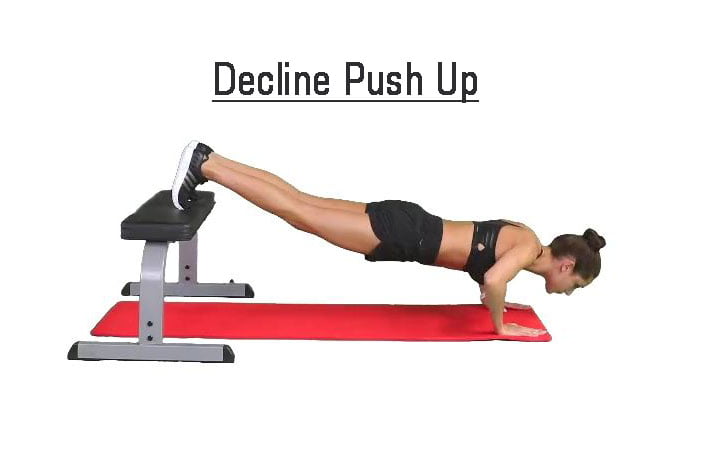
Welcome to this comprehensive guide on the decline push up, a powerful exercise that targets the upper body muscles while adding an extra challenge. Whether you’re an experienced fitness enthusiast or just starting your fitness journey, the decline push up can be a valuable addition to your routine. In this article, we will explore the benefits, proper technique, variations, and frequently asked questions (FAQs) related to decline push ups. So, let’s dive in and discover how this exercise can help you achieve your fitness goals!
The decline push up is a challenging variation of the traditional push up exercise that elevates your feet on an elevated surface, such as a bench or step. This position increases the load on your upper body muscles, particularly the chest, shoulders, and triceps, making it more intense and effective than regular push ups.
Performing decline push ups regularly can help you build upper body strength, improve muscular endurance, and enhance core stability. It also engages the muscles in your shoulders and arms to a greater extent than traditional push ups. Whether your goal is to build muscle, increase strength, or improve overall fitness, the decline push up is a versatile exercise that can benefit individuals of all fitness levels.
The decline push up offers numerous benefits that make it a valuable addition to any workout routine. Here are some key advantages of incorporating decline push ups into your training:
To maximize the benefits and minimize the risk of injury, it’s essential to perform decline push ups with proper technique. Follow these steps to execute the exercise correctly:
While performing decline push ups, it’s crucial to avoid common mistakes that can compromise your form and effectiveness. Be mindful of the following errors and make the necessary corrections:
To add variety and challenge to your decline push up routine, consider incorporating the following variations:
Remember to gradually progress to more advanced variations as your strength and proficiency increase. Always prioritize proper form and listen to your body to prevent overexertion or injury.
A: While decline push ups can be challenging, individuals of various fitness levels can perform them. Beginners can start with a lower elevation and gradually increase the difficulty as they build strength and confidence.
A: The number of these push ups you should perform depends on your fitness level and goals. Start with a number that challenges you without compromising form, and gradually increase the repetitions over time.
A: Absolutely! these workouts are suitable for both men and women. They offer an effective way to strengthen and tone the upper body muscles, regardless of gender.
A: Yes, these workout can contribute to chest development by targeting the pectoral muscles. However, it’s important to combine them with a well-rounded strength training program and proper nutrition for optimal muscle growth.
A: If you experience wrist pain during workout, you can try modifying the exercise by using push-up handles or dumbbells to reduce the strain on your wrists. Alternatively, you may consult with a healthcare professional or a qualified fitness trainer for alternative exercises that are wrist-friendly.
A: Both decline and regular push ups have their own benefits and target different muscle groups to varying degrees. These workouts primarily emphasize the upper chest muscles, while regular push ups engage a broader range of muscles including the triceps and shoulders. Incorporating both variations into your routine can provide a well-rounded upper body workout.
A: This workout alone may not directly lead to weight loss, as it primarily focuses on building strength and muscle tone. However, incorporating decline push ups into a comprehensive fitness program that includes cardiovascular exercise and a balanced diet can contribute to overall weight loss and improved body composition.
Incorporating decline push ups into your fitness routine can be a game-changer when it comes to building upper body strength, enhancing core stability, and achieving a well-defined chest and shoulders. By following the proper technique, avoiding common mistakes, and exploring various variations, you can take full advantage of this challenging exercise. Remember to start at a level that suits your current fitness level and gradually progress as you become stronger and more confident.
So, why wait? Lace up your sneakers, find a suitable elevated surface, and start reaping the benefits of decline push ups today. Push your limits, embrace the challenge, and witness the transformation in your upper body strength and physique.
Recommended other topics: Exercise for Smaller Waist-Achieving Your Fitness Goals










© InfoDoot. All Rights Reserved.